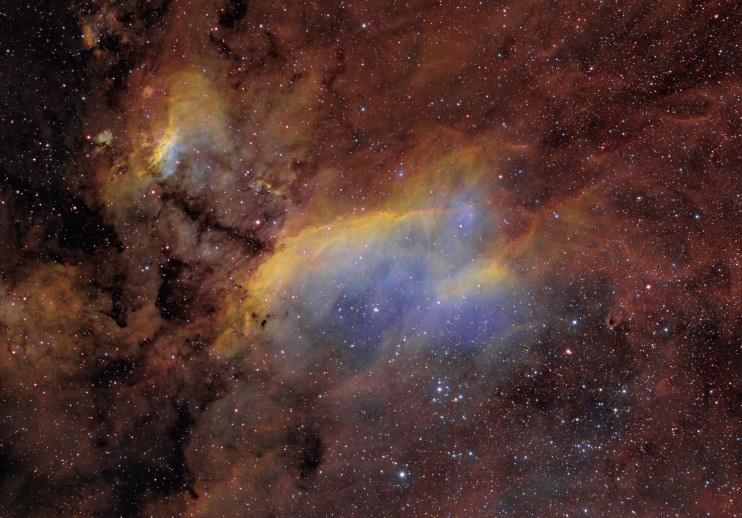
|
Credit & Copyright: Martin Pugh
Explanation:
South of Antares, in the tail of
the nebula-rich constellation
Scorpius, lies emission nebula
IC 4628.
Nearby hot, massive stars, millions of years young,
radiate the nebula
with invisible ultraviolet light, stripping electrons
from atoms.
The electrons eventually recombine with the atoms to produce the visible
nebular glow.
This narrow band image adopts
a typical false-color mapping of
the atomic emission, showing hydrogen emission
in green hues, sulfur as red and oxygen as blue.
At an estimated distance of 6,000 light-years, the region shown
is about 80 light-years across.
The nebula is also
cataloged as Gum 56 for Australian
astronomer Colin Stanley Gum,
but seafood-loving astronomers might
know this cosmic cloud as
The Prawn Nebula.
|
January February March April May June July August September October November December |
| |||||||||||||||||||||||||||||||||||||||||||||||||||||||
NASA Web Site Statements, Warnings, and Disclaimers
NASA Official: Jay Norris. Specific rights apply.
A service of: LHEA at NASA / GSFC
& Michigan Tech. U.
Based on Astronomy Picture
Of the Day
Publications with keywords: emission nebula - star formation
Publications with words: emission nebula - star formation
See also:
- APOD: 2025 September 19 Á The NGC 6914 Complex
- APOD: 2025 September 10 Á The Great Lacerta Nebula
- APOD: 2025 July 21 Á Cats Paw Nebula from Webb Space Telescope
- APOD: 2025 July 16 Á The Rosette Nebula from DECam
- APOD: 2025 July 10 Á Lynds Dark Nebula 1251
- APOD: 2025 July 5 Á Ou4: The Giant Squid Nebula
- APOD: 2025 June 26 Á The Seagull Nebula
